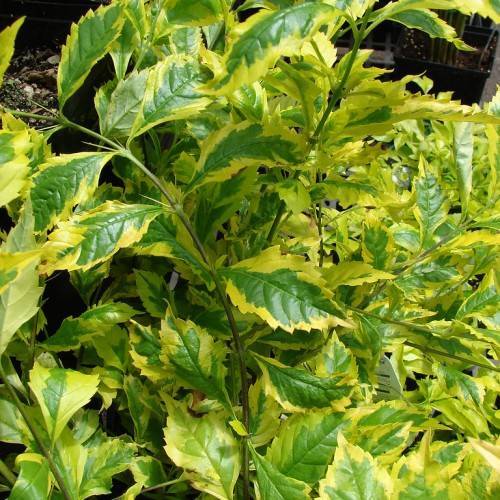
pigeon berry
Duranta erecta 'Gold Edge'
Cycle:
Perennial
Watering:
Average
Hardiness Zone:
9 - 11
Flowers:
Flowers
Sun:
Full sun
Leaf:
Yes
Growth Rate:
High
Maintenance:
Moderate
Salt Tolerant:
Yes
Care Level:
Medium
watering
Duranta erecta 'Gold Edge' requires regular watering, especially in warm and dry conditions. Water the plant deeply enough that the soil is moist to a depth of 4-5 inches. Water weekly if it does not rain; however, if rainfall is greater than 1 inch per week, skip watering that week. Overwatering can lead to root rot and leaf drop. The plant also benefits from a monthly application of balanced fertilizer, divided between spring and summer.
sunlight
Pigeon berry (Duranta erecta 'Gold Edge') should receive full sun for 6 to 8 hours each day. This plant species is tropical and prefers warmer temperatures, so during the spring through fall when temperatures are highest, you should give the plant at least 8 hours of direct sunlight each day. During the winter, when temperatures are cooler, you should give the plant no less than 6 hours of sunlight each day. It is best to place the plant in an area that will get full sunshine for a majority of the day, so a south-facing window or location within your garden would be ideal.
pruning
Pigeon berry (Duranta erecta) is a broadleaf evergreen shrub that can be pruned to keep it looking neat and full. Pruning should be done when the plant is actively growing, which is typically during the summer and early fall months. Pruning should be done judiciously and only to remove dead or overgrown stems. Bending and shaping stems is also possible. To encourage bushier growth, moderate pruning can be done before and during active growth periods. Prune half of the stems back to 1-third of their height. Pruning should never remove more than a third of the total growth at once. Doing too much pruning can cause dieback or shock the shurbs, which can lead to poor growth and a weak appearance.
